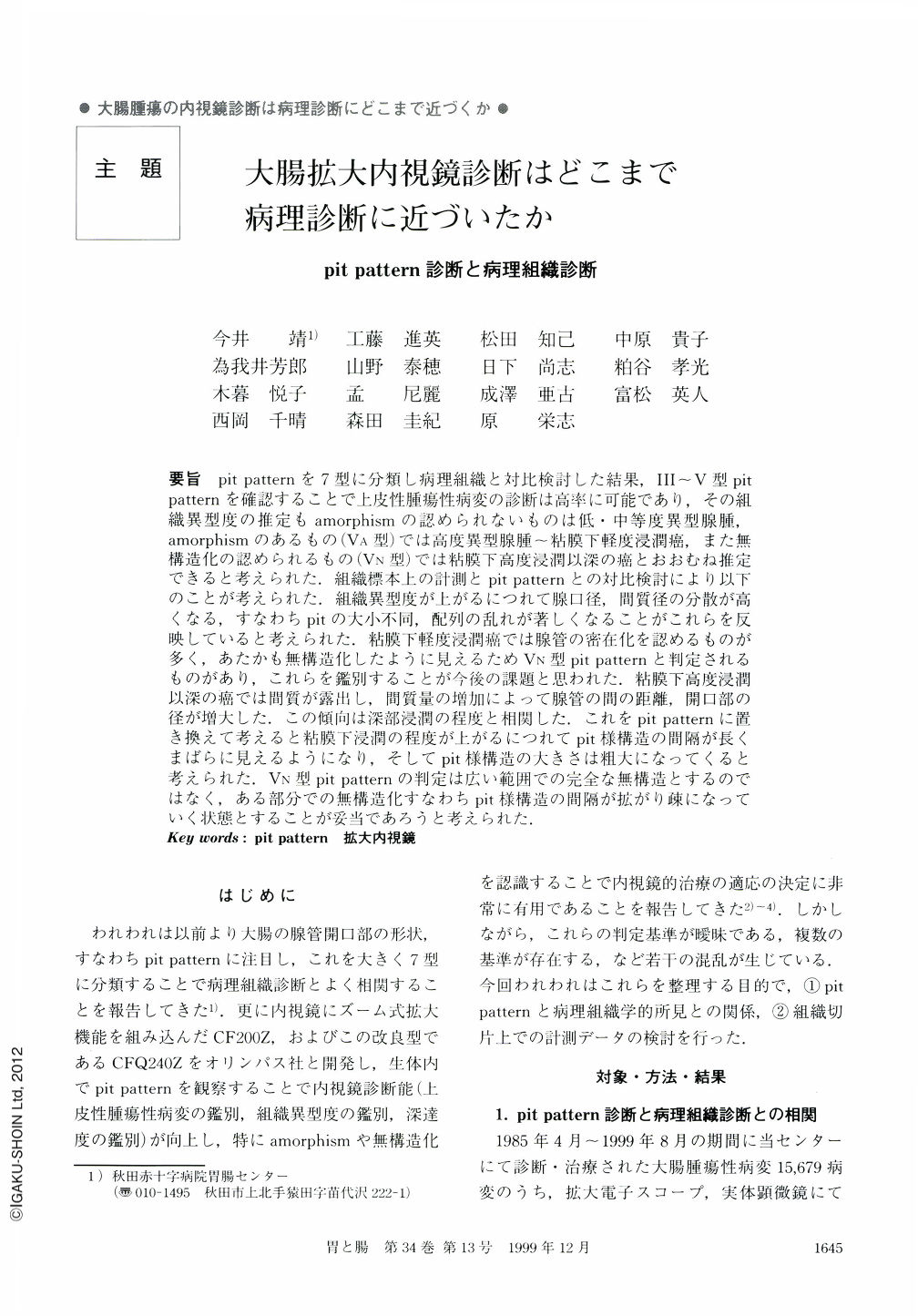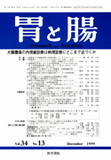Japanese
English
- 有料閲覧
- Abstract 文献概要
- 1ページ目 Look Inside
要旨 pit patternを7型に分類し病理組織と対比検討した結果,Ⅲ~Ⅴ型pit patternを確認することで上皮性腫瘍性病変の診断は高率に可能であり,その組織異型度の推定もamorphismの認められないものは低・中等度異型腺腫,amorphismのあるもの(ⅤA型)では高度異型腺腫~粘膜下軽度浸潤癌,また無構造化の認められるもの(ⅤN型)では粘膜下高度浸潤以深の癌とおおむね推定できると考えられた.組織標本上の計測とpit patternとの対比検討により以下のことが考えられた.組織異型度が上がるにつれて腺口径,間質径の分散が高くなる,すなわちpitの大小不同,配列の乱れが著しくなることがこれらを反映していると考えられた.粘膜下軽度浸潤癌では腺管の密在化を認めるものが多く,あたかも無構造化したように見えるためⅤN型pit patternと判定されるものがあり,これらを鑑別することが今後の課題と思われた.粘膜下高度浸潤以深の癌では間質が露出し,間質量の増加によって腺管の間の距離,開口部の径が増大した.この傾向は深部浸潤の程度と相関した.これをpit patternに置き換えて考えると粘膜下浸潤の程度が上がるにつれてpit様構造の間隔が長くまばらに見えるようになり,そしてpit様構造の大きさは粗大になってくると考えられた.ⅤN型pit patternの判定は広い範囲での完全な無構造とするのではなく,ある部分での無構造化すなわちpit様構造の間隔が拡がり疎になっていく状態とすることが妥当であろうと考えられた.
We classified the pit pattern into seven types, and examined the relationship of the pit pattern and the pathological features in colorectal neoplasms. We could mostly diagnose lesions rightly as epithelial neoplastic lesions by recognizing their pit patterns as type Ⅲ, Ⅳ and Ⅴ. We could also mostly diagnose rightly that were lesions without amorphism were adenoma with mild to moderate atypia, and lesions with amorphism were adenoma with severe atypia or intramucosal carcinoma or slightly invasive submucosal carcinoma. Lesions with non-structural pit pattern were massively submucosal invading carcinoma or advanced carcinomas. Lesions which showed type ⅢL pit pattern were not submucosal invading carcinomas.
We analyzed pathological specimens of epithelial neoplastic lesions. As the atypisum of pathological features grew worse, the dispersion of the width and distance of the glands rose. We considered this reflected the variety of length and disarrangement of the pit. There were a lot of lesions that showed high density of glands in slightly invasive submucosal carcinomas. Therefore most of these lesions must be diagnosed as having amorphous (ⅤA) pit pattern. In massively invasive submucosal carcinomas and advanced carcinoma, the stroma was cropped out, the distance and width of the glands had become long. These tendencies were related to the degree of invasion. Considering the pit patterns, it was considered that as the degree of invasion became massive, there was a tendency of the distance between the pits to increase, the density of the pits to decrease and the size of the pits become larger. We considered that nonstructural (ⅤN) pit pattern can be judged by the long distance between the pits and the consequent decrease in their density.

Copyright © 1999, Igaku-Shoin Ltd. All rights reserved.


